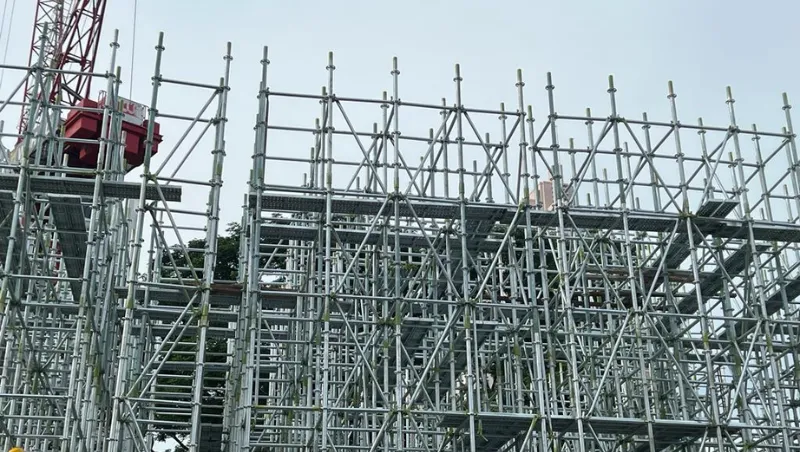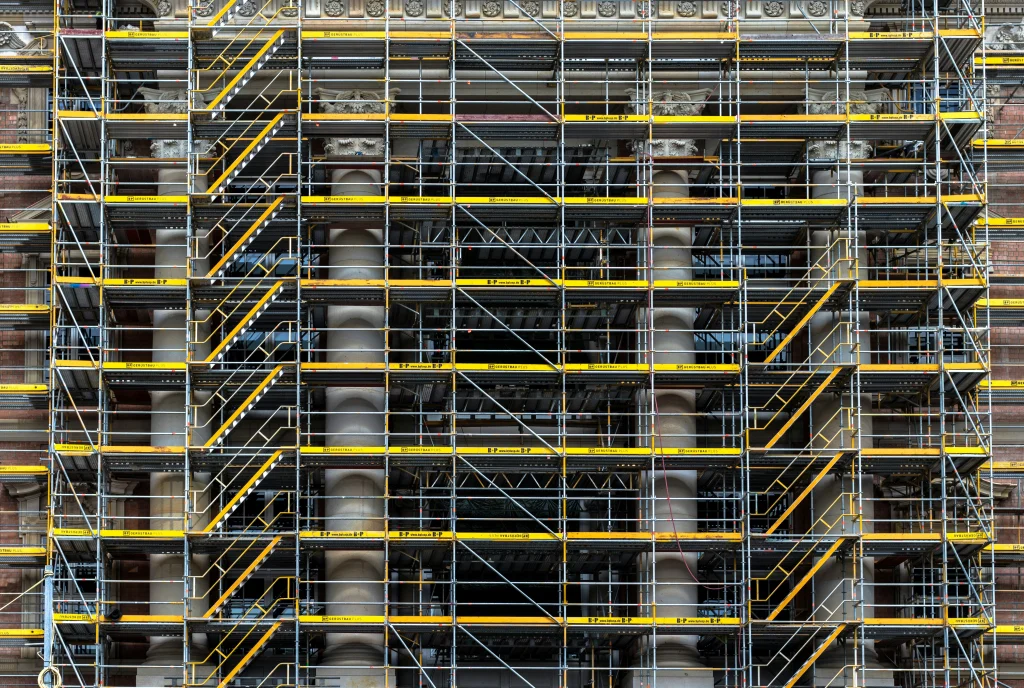
In the construction industry, two essential components play a vital role in guaranteeing the stability and security of buildings: scaffolding and formwork. Scaffolding offers a temporary framework for workers to reach different sections of a building during its construction or upkeep, whereas formwork acts as a template for molding concrete into specific structures. Together, they are the cornerstone of construction endeavors, allowing builders to carry out intricate designs with accuracy and effectiveness. This comprehensive manual delves into the realm of scaffolding and formwork, examining their roles, variations, and significance in contemporary construction methodologies.
Understanding of Scaffolding:
Scaffolding serves as a provisional structure constructed to assist workers and materials while constructing, repairing, or maintaining buildings. It offers a secure and steady surface for workers to carry out tasks at elevated positions that would otherwise be out of reach. Additionally, scaffolding aids in the movement of materials and tools between various levels of a construction site.
Different Types of Scaffolding:
One common type of scaffolding is supported scaffolding, which involves platforms that are supported by rigid frames, poles, or outriggers. Examples of supported scaffolding include frame scaffolding, tube and coupler scaffolding, and mast climbing scaffolding.
Another type is suspended scaffolding, which hangs from the top of a building and is typically used for tasks like window washing or exterior repairs. Suspended scaffolding consists of platforms that are suspended by ropes or cables.
Mobile scaffolding, also known as rolling scaffolding, is another type that is mounted on wheels or casters. This allows for easy movement around a construction site and is particularly useful for projects that require frequent repositioning of scaffolding.
Scaffolding plays a crucial role in construction for various reasons:
Safety: Scaffolding offers a safe working platform, minimizing the chances of accidents and falls on construction sites.
Productivity: With scaffolding, workers can easily access different levels of a building, allowing them to work more efficiently and speeding up the construction process.
Adaptability: Scaffolding can be tailored to meet the specific requirements of a project, whether it involves constructing a tall building, a bridge, or maintaining a facade.
Accessibility: Scaffolding ensures that both workers and materials can reach all areas of a construction site, even those that are hard to reach through traditional means.
Formwork, also referred to as shuttering or molds, serves the purpose of confining and molding concrete until it cures and attains the necessary strength to bear its own weight and any extra loads. The complexity of formwork systems can range from basic wooden forms to advanced modular systems constructed from steel or aluminum.
Different Types of Formwork:
There are various types of formwork used in construction projects, each with its own advantages and suitability for different tasks. One common type is traditional timber formwork, which involves the use of timber planks, boards, and props to create molds for pouring concrete. While this method is cost-effective, it does require a significant amount of labor and is less durable compared to modern formwork systems.
Another type of formwork is steel formwork, which consists of prefabricated panels or frames made of steel plates. Steel formwork offers greater strength, durability, and reusability than timber formwork, making it an excellent choice for large-scale construction projects.
Additionally, there is aluminum formwork, which utilizes lightweight aluminum panels or frames. This type of formwork is easy to assemble, dismantle, and transport, making it particularly suitable for repetitive construction tasks. It is commonly used in the construction of residential complexes or commercial structures.
Overall, the choice of formwork depends on the specific requirements of the project, considering factors such as cost, durability, and ease of use.
Formwork plays a crucial role in construction for several reasons:
1. Accuracy: Formwork enables the accurate molding of concrete structures, guaranteeing they adhere to the necessary measurements and requirements.
2. Stability: Formwork bears the load of fresh concrete until it solidifies and attains ample strength to support itself, averting any potential collapse or distortion..
3. Longevity: Premium formwork systems are capable of enduring numerous cycles of use, lessening the frequency of replacements and reducing construction expenses in the long run.
4. Flexibility: Formwork can be adjusted to suit various forms and layouts, empowering architects and engineers to bring intricate design ideas to life.
In summary, scaffolding and formwork are crucial components in the construction sector, offering vital assistance and framework during the building phase. Scaffolding allows for secure access to elevated work zones, while formwork aids in the accurate formation of concrete structures. By grasping the roles, varieties, and significance of scaffolding and formwork, construction experts can guarantee the smooth completion of projects, ranging from minor upgrades to extensive constructions. With the ongoing progress of technology, new advancements in scaffolding and formwork are expected to boost productivity, safety, and eco-friendliness in the construction field.



